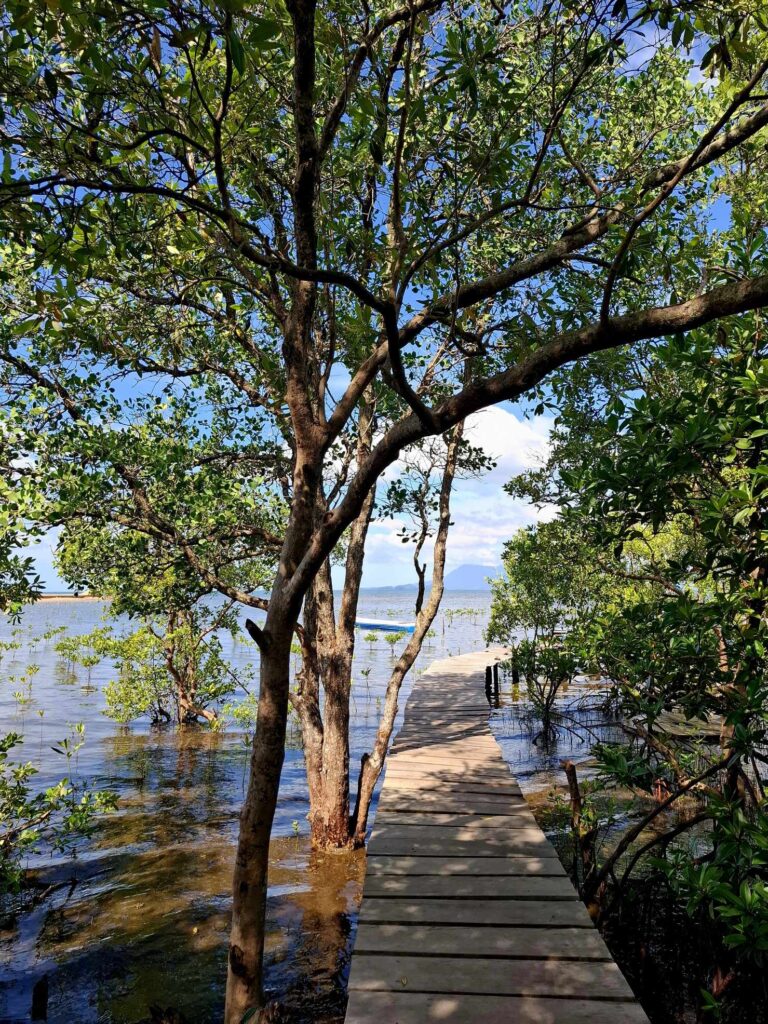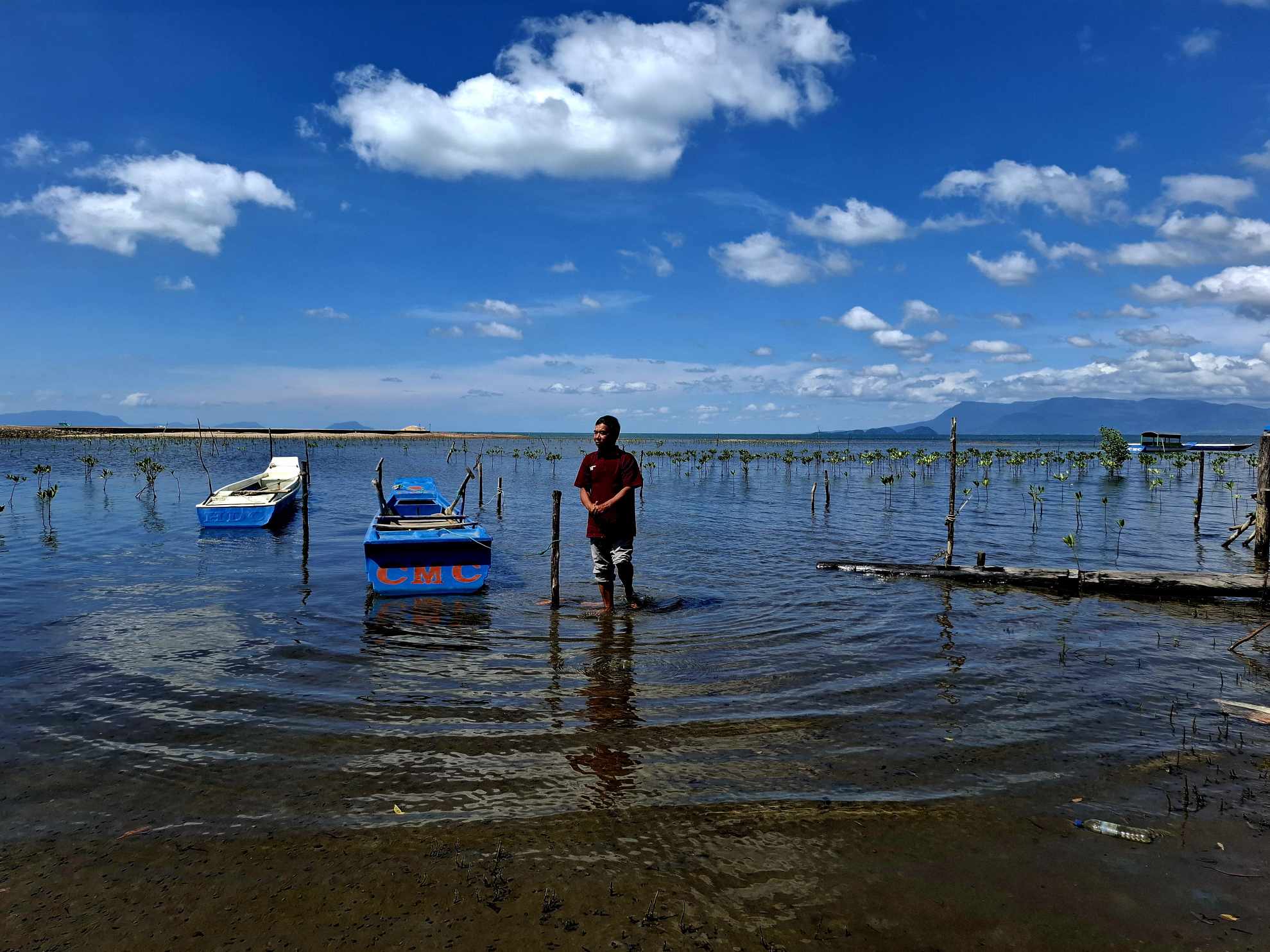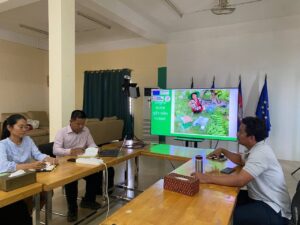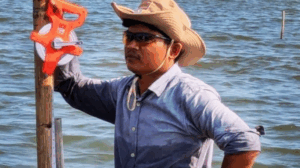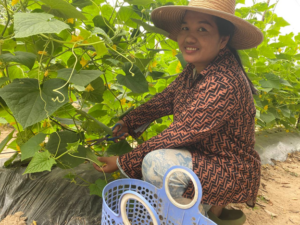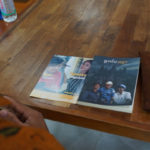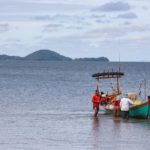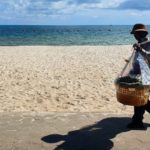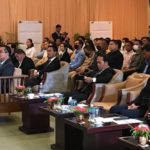In the coastal province of Kep, the Thmey community is taking bold steps to fight climate change. While contributing the least to this global crisis, Cambodia’s fishing communities bear the brunt of its harshest consequences. Their response to climate injustice? Restoring mangroves – a powerful symbol of resilience, a lifeline for their livelihoods, and a decisive stand for the planet.
“Mangroves are essential,” says Nos Nhep, deputy chief of the Pum Thmei community. “They provide habitats for fish, crabs, and countless other marine species crucial for our livelihoods.” For the 163 members of his community – fishermen, market vendors, factory workers, and construction laborers -mangroves are vital. Beyond supporting biodiversity, the forest acts as a natural defense against rising seas, storm surges, and the escalating impacts of climate change.
With support from the CO-SAVED project, co-led by Action Education / Aide et Action (AEA) and co-funded by the EU, these communities are turning local conservation into global action. Through their reforestation efforts, they are not only revitalizing vital ecosystems but also contributing to the global fight against climate change.
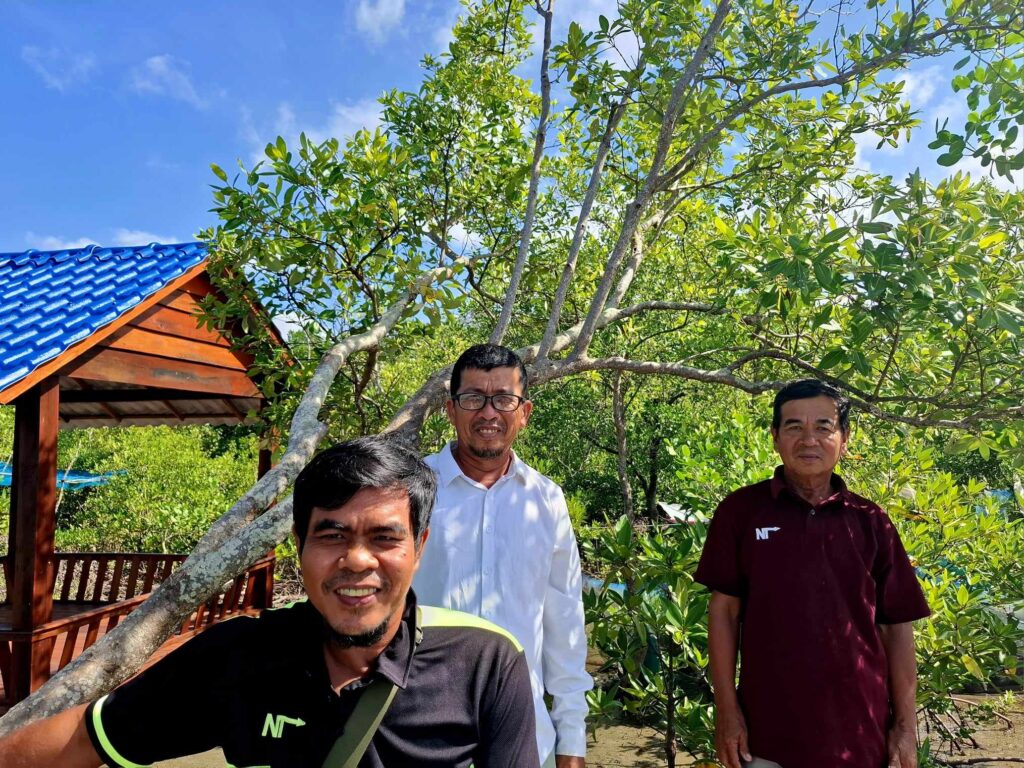
From Seeds to Forests: The Thmey Community’s Commitment
The journey of mangrove restoration begins with people like Mit Laiman, second deputy chief of the Pum Thmei community. “We collect seeds from trees, mix them with mud, and pack them into small bags,” he explains. These seeds are then nurtured at the Green Grow Park, a mangrove nursery, until the young mangroves are ready to be planted.
Both tourists and community members are invited to join this reforestation initiative. For just 2,500 riels (about 0.50 USD) per plant, visitors can plant their own mangroves, directly participating in restoration efforts. “Since June, we’ve sold and planted around 5,000 mangroves,” Nos Nhep shared.
Eco-Tourism: Building Resilience and Opportunity
CO-SAVED’s support extends beyond reforestation by empowering community members to embrace eco-tourism as a sustainable source of income. The project funded a mangrove nursery and contributed to the purchase of a small boat, used for fishing and guided tours. Materials such as recycled wood was provided to build 250 meters of the walking path and a welcoming gate at the forest entrance. The community also received three shaded huts for picnics.
“Tourists can rent the huts for an outdoor meal, plant trees with us, or enjoy boat tours,” says Nos Nhep. These activities not only generate income for the community but also raise awareness about the importance of mangroves. While boat tours are not yet popular, Mit Laiman sees great potential for growth. “If more people visit, fishermen will have time to lead tours.” For Nos Nhep, “there is a need for promotion to attract more visitors.”
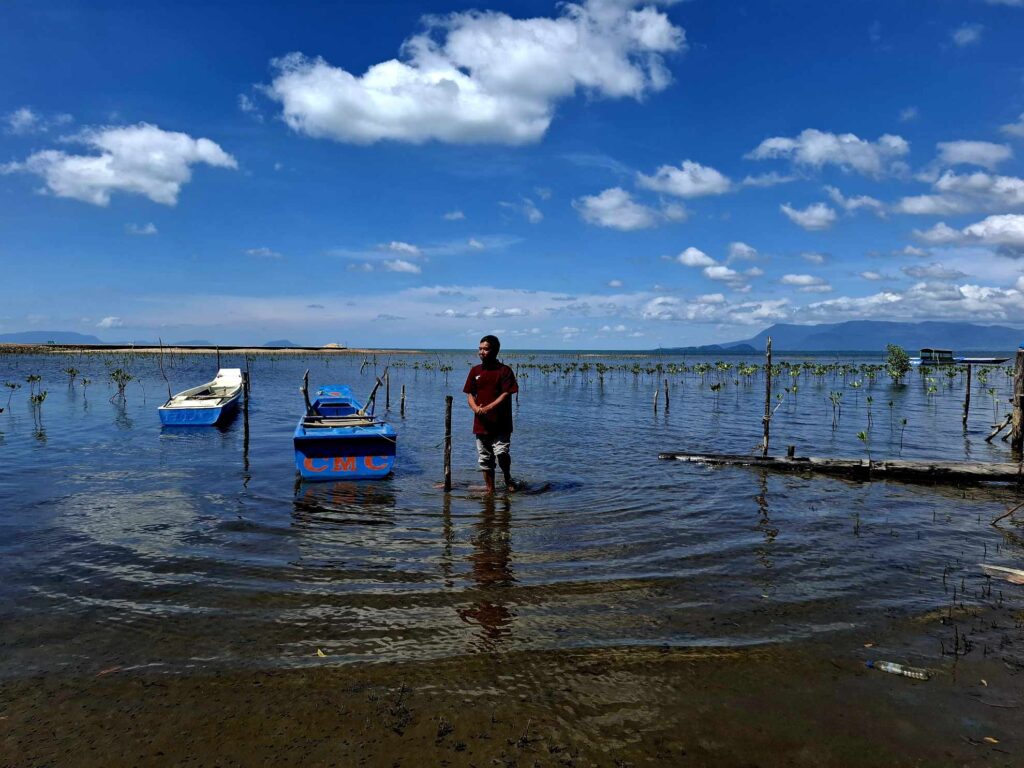
Community member Lai Sales adds: “I’m often here, ready to welcome visitors. I can guard their motos, clean the area, or offer mats and hammocks. I do whatever I can.” Lai dreams of expanding the forest’s appeal, saying, “I hope for more mangroves, more walking paths, and even homestays one day. I wish for our forest to become a renowned tourist attraction that helps our community flourish.”
The Power of Local Action
By restoring mangroves, Kep’s fishing communities demonstrate how local efforts can drive global impact. These trees combat climate change by capturing carbon, preserving biodiversity, and protecting coastlines. Meanwhile, eco-tourism provides a sustainable alternative for livelihoods, empowering local communities to adapt and thrive in the face of adversity.
This is more than an environmental story; it’s a fight for justice. Communities bearing the brunt of a global crisis they did not cause are leading the charge with nature-based solutions and collective determination. They are proving to the world that solutions rooted in nature and strong community spirit can have a far-reaching impact.
By caring for the mangroves, they are not just protecting their homes – they are contributing to the health of the entire planet.
